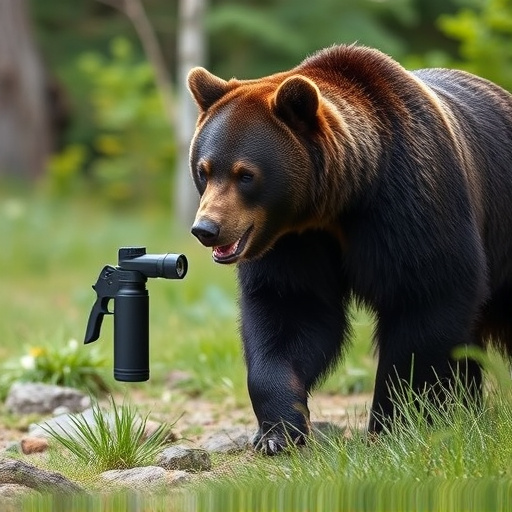Maintaining the proper temperature (between -4°F and 120°F/-20°C to 49°C) for bear spray storage is vital to preserve its effectiveness. Extreme heat or cold can degrade active ingredients, so store it in a controlled environment, away from direct sunlight and frozen conditions. The ideal range for most areas is 50°F to 70°F (10°C to 21°C), with regular inspections to check expiration dates and prevent damage for optimal performance when facing bears.
Bear spray is an essential wilderness safety gear, offering a non-lethal deterrent against bears. This comprehensive guide explores the crucial aspects of bear spray, from understanding its composition and effectiveness to choosing the right product for your needs. We delve into proper storage techniques, emphasizing the ideal Proper Temperature for Bear Spray Storage to maintain optimal performance. Additionally, we cover application techniques, safety measures, and maintenance guidelines to ensure you’re prepared for any encounter.
- Understanding Bear Spray: Composition and Effectiveness
- Choosing the Right Bear Spray for Your Needs
- Proper Storage: Ensuring Optimal Performance
- Application Techniques and Safety Measures
- Maintenance and Replacement Guidelines
Understanding Bear Spray: Composition and Effectiveness
Choosing the Right Bear Spray for Your Needs
Proper Storage: Ensuring Optimal Performance
Proper storage is key to ensuring bear spray maintains its optimal performance. Keep it in a cool, dry place, away from direct sunlight and extreme temperatures. The recommended Proper Temperature for Bear Spray Storage is between 50°F to 70°F (10°C to 21°C). Extreme heat or cold can degrade the effectiveness of the spray. Additionally, store it out of reach of children and pets, and always keep it in its original packaging with the seal intact.
Remember that improper storage can render your bear spray ineffective when you need it most. Regularly check the expiration date and inspect for any signs of damage or leakage. By maintaining proper storage conditions, you can trust that your bear spray will be ready and reliable whenever you encounter a potential bear encounter in the wilderness.
Application Techniques and Safety Measures
Bear spray is most effective when used correctly, and understanding application techniques is key to your safety in the wilderness. When facing a bear, it’s crucial to remain calm and employ the ‘spray-and-retreat’ strategy. Aim for the bear’s face, eyes, and nose—these sensitive areas will help deter the animal without causing serious harm. Start spraying from a safe distance, usually around 20-30 feet away, and move backwards as the spray reaches the bear to maintain your safety.
Proper storage is another essential aspect of bear spray safety. The recommended proper temperature for bear spray storage is below freezing but above -40°F (-40°C). Ensure you store it in a cold environment, like a car or a chilled outdoor storage unit, to maintain its effectiveness. Keep it out of direct sunlight and away from heat sources to prevent degradation. Remember, knowing how to use your bear spray and keeping it safely stored are both vital components of your wilderness survival kit.
Maintenance and Replacement Guidelines
Proper storage is key to maintaining the effectiveness of bear spray. It’s recommended to store your spray in a cool, dry place, ideally between 50°F and 70°F (10°C to 21°C). Extreme temperatures can degrade the chemicals inside, rendering the spray less potent. Avoid leaving it in direct sunlight or in your vehicle during hot weather conditions.
Regular inspection is crucial for safety. Check the expiration date and ensure the seal remains intact. If the spray has been exposed to moisture or shows signs of damage, replace it immediately. It’s important to note that bear spray should be replaced after 3-5 years, depending on storage conditions, to guarantee optimal performance when you need it most.
Bear spray is a valuable tool for wilderness safety, but proper understanding and usage are key. By selecting the right type for your needs, storing it at the optimal temperature (usually below 70°F), and learning effective application techniques, you can enhance your safety while enjoying outdoor adventures. Regular maintenance and timely replacement ensure its continued effectiveness in potentially life-saving situations. Remember, knowledge is power; stay prepared and respect wildlife.
